The Fridge is Red is a quirky anthology of six seemingly unrelated horror stories with a lo-fi presentation that makes it feel like a cursed PlayStation 1 game.
Quick View
Title: The Fridge is Red
Release Date: September 27, 2022
Price: $14.99
Suggested Audience Age: 13+
Availability: Steam
Recommended for fans of: Chilla's Art, Babysitter Bloodbath, Maid of Sker
Geek to Geek Media was provided with a review copy of this title.
“Lo-fi” horror is all the rage these days. For every AAA-quality horror game such as Resident Evil Village, there are at least a dozen indie games offering scares with a fraction of the budget. Rather than even attempting to compete with multimillion-dollar companies, indie developers are looking to the past for inspiration. Faith found inspiration in Atari-era minimalist pixel art. Puppet Combo offers bloody homage to 32-bit Survival Horror. And now, developer 5WORD Team gives us slow-burn horror by way of early PlayStation with The Fridge is Red.
The Fridge is Red and Full of Dread
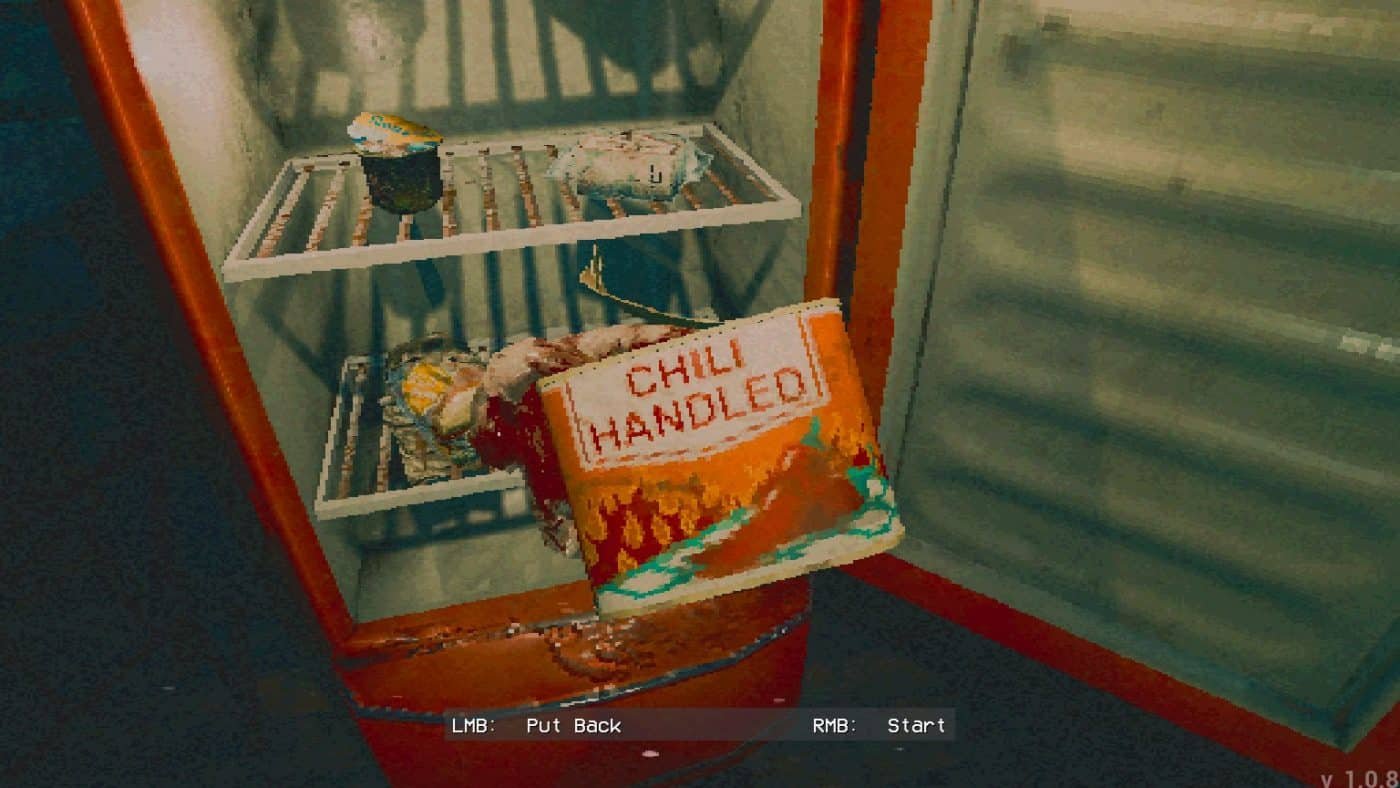
The Fridge is Red is an anthology of interactive horror stories that are all connected by a mysterious red refrigerator. The ominous appliance's presence figures heavily into the beginning of the game. Upon starting a new game, you open the fridge and examine an item of food. Doing so launches you into the first chapter, titled “Fidgeted Sherri.”
From a first-person perspective, you are placed in front of the eponymous refrigerator, which shakes violently. Scraps of paper with a child's drawings and warnings are scattered about. You are stuck in place, only able to turn to examine your surroundings. Averting your gaze causes the refrigerator to creep closer, however, so you must examine the environment carefully to figure out how to escape.
Each chapter has a collectible food item that unlocks the next chapter after examining it. With six total chapters, each with its own theme and style of gameplay, The Fridge is Red is not lacking in variety. The SCP-inspired red fridge and the immediate terror it represents starts things off with a fever pitch, but things calm down considerably from there. Subsequent chapters offer more of a creeping sense of dread, sometimes even focusing on abstract or existential horror. The red refrigerator appears throughout with its true significance hidden as the game inexorably lurches toward its tragic conclusion.
The Profane and the Mundane
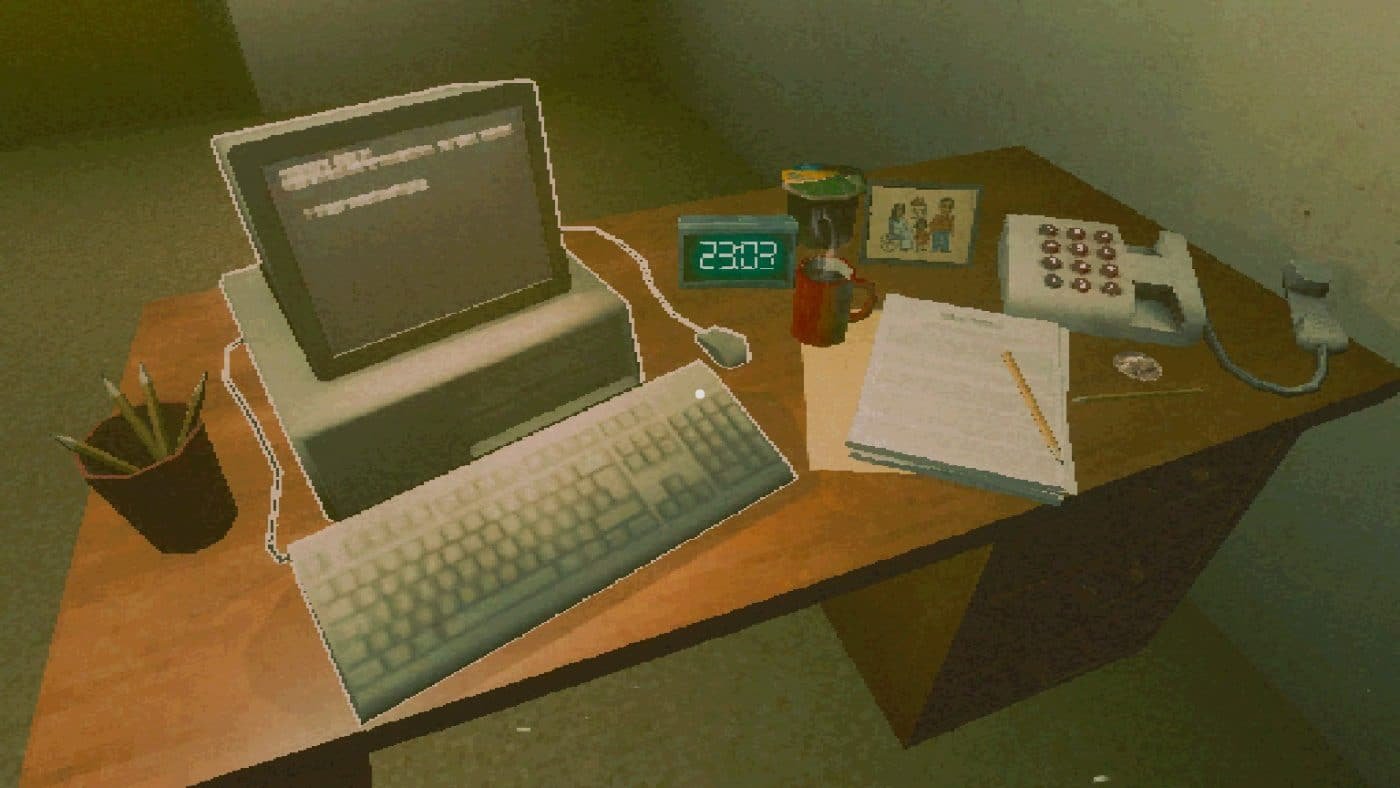
The bulk of The Fridge is Red‘s chapters put you in surprisingly relatable situations. Sitting in your office chair, waiting to go home. Visiting a loved one at a hospital. Sitting at home, watching television. None of these are inherently frightening situations, but the game effectively taps into some primal fears associated with such mundanity. It permeates a sense of dread both with its sound design and surreal, lo-fi visual effects. The first-person perspective and limited dialogue add an “unreliable narrator” quality to the story, making you wonder if the character you're in control of somehow deserves the purgatory-like reality they exist within.

Things hit a snag when it isn't entirely clear what mundane action the game wants you to do, however. Compounded with the often repetitious actions required to progress, the horror quickly diminishes when you become stuck even for a short while. I love slow-burn horror (movies like Berberian Sound Studio or The Blackcoat's Daughter come to mind), but the trick is to escalate tension slowly and without ever letting up. Getting stuck in The Fridge is Red is akin to taking a simmering pot of food from the stove and tossing it into the (hopefully not red and evil) refrigerator.
Occasionally, you are at the mercy of a hostile NPC that relentlessly hunts you down. There aren't many of these “chase” sequences, but they can be a major source of frustration. With no way to fight back, you're forced to either outrun your pursuer or find a place to hide. With no clear objective at times, the presence of a pursuer reinforces any annoyance by the lack of direction.
Seeing Red
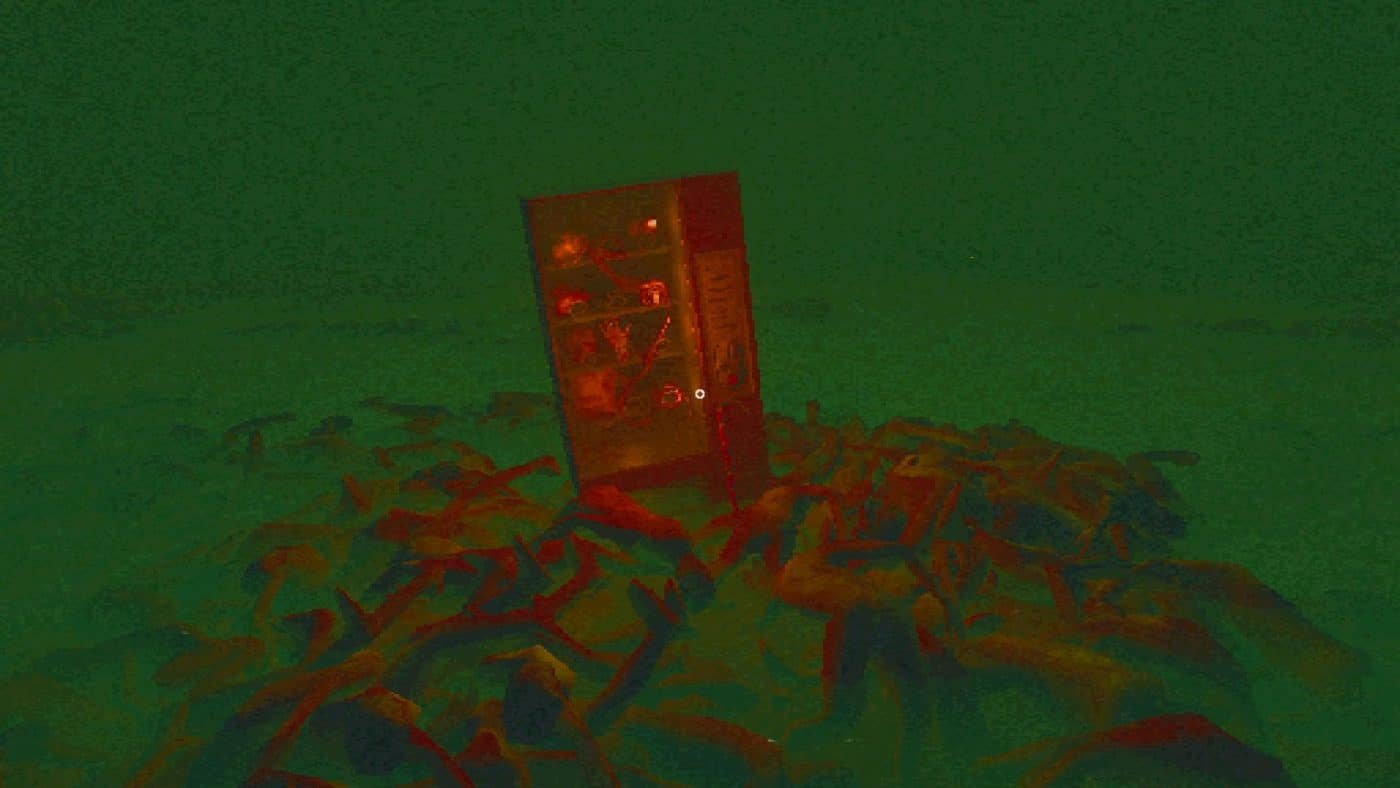
The Fridge is Red‘s 90s-inspired presentation goes beyond pure aesthetics. What the game lacks in detailed textures it more than makes up for with brilliant use of color. For example, a soft red blur in the distance often signifies an objective. As you approach it, the color transitions from an objective marker to the environment itself. The use of colors is not unlike how Italian “Giallo” films use them to enhance set design, but here they are used to make the level design less confusing. As you navigate labyrinthine corridors, the environment transitions from color to color, reminding you of where you have already explored.
Clever use of colors aids the player in navigating the game's cursed hallways, but interacting with objects remains a frustrating challenge at times. Items or NPCs you can interact with have a glowing white outline, but sometimes clicking on them does nothing or simply elicits a vague and repeated line of dialogue. The surreal, dreamlike atmosphere lends itself well to “dream logic,” but the lack of direction takes things a step back toward frustration.
The Fridge is Red's Graphics and Sound
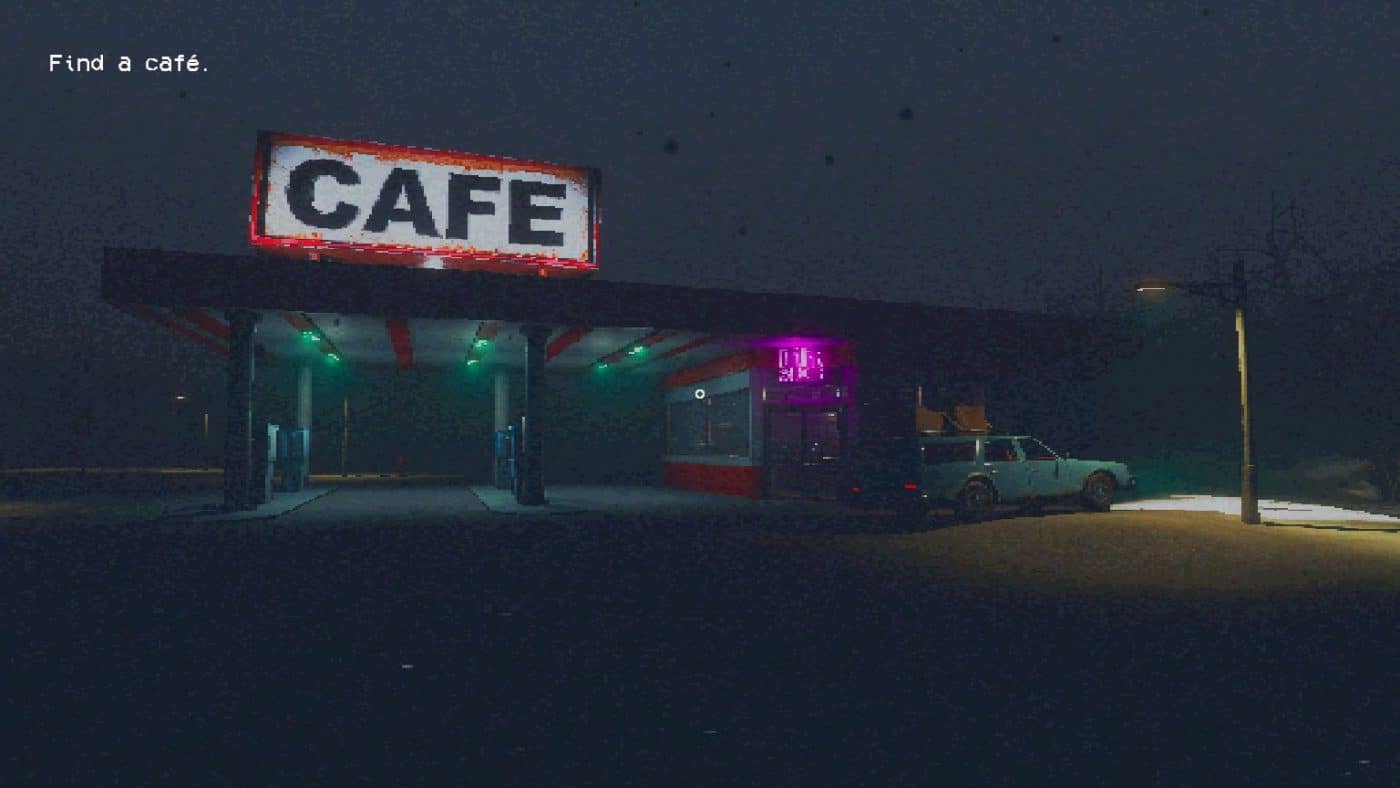
The Fridge is Red looks like a 25-year-old game, but in the best way possible. The minimalist 3D graphics exude personality befitting the game's dreamlike atmosphere. Environments are sparse, but ambient fog and colored lights add metaphoric texture where the literal textures are lacking, and watching a familiar setting such as an office building slowly deteriorate into a hellish landscape is always fun to shudder at. One complaint about the visuals is that they're sometimes a bit too dark, with no in-game Brightness settings.
The game's sound design is also top-notch. Muffled, warbly tunes lull you into a dreamlike trance, and I was reminded of Angelo Badalamenti's music on more than one occasion. Fans of David Lynch know that is always a good thing. There's a good amount of musical variety as well, with one level going full John Carpenter with its synth-drenched ambiance. Sound effects and dialogue have an appropriate amount of distortion, making normal, everyday sounds such as footsteps or creaking doors sound take on a sinister tone.
Panic Like It's 1999
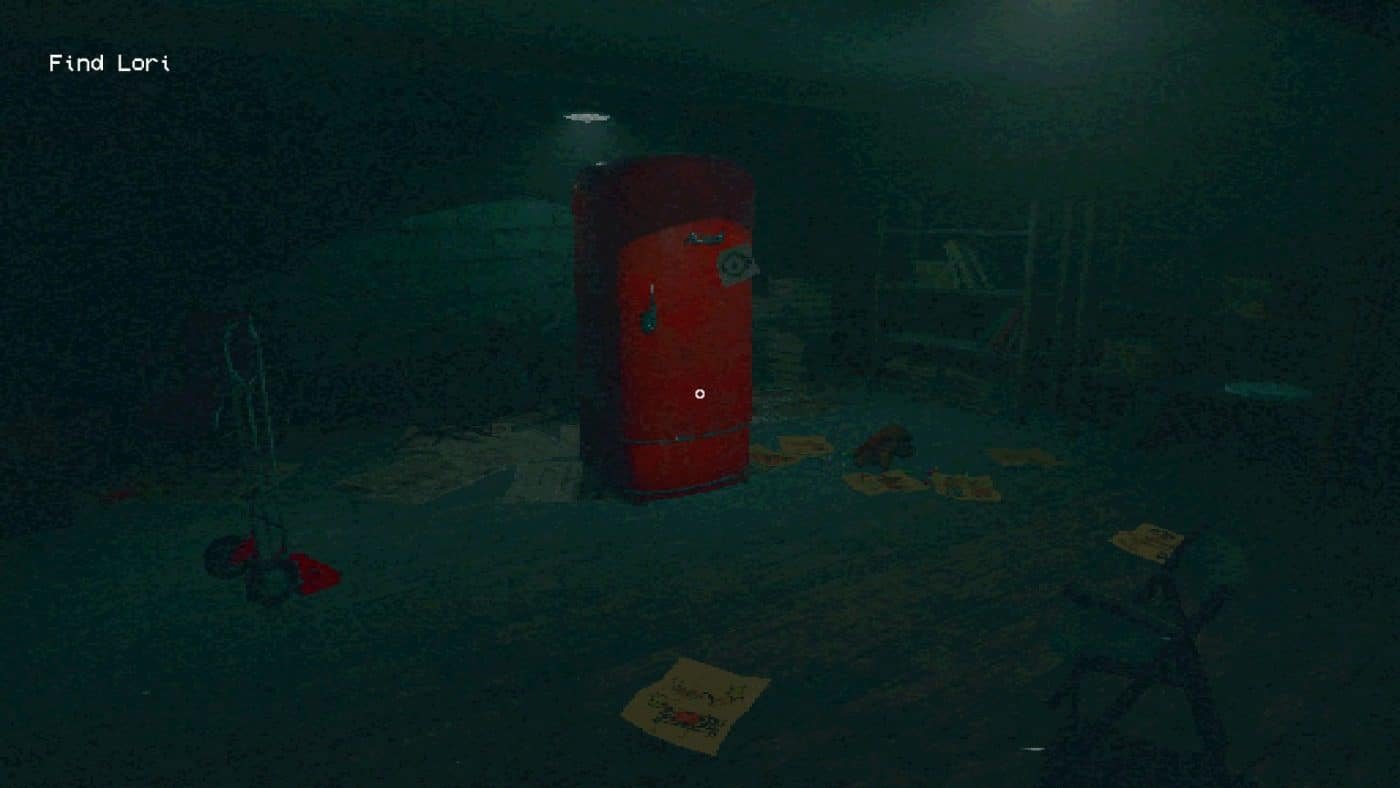
The slow-burn style of horror presented by The Fridge is Red is very much an acquired taste. Those who immerse themselves in the surreal, lo-fi atmosphere will find enough lurking terror to justify a playthrough. Those who are easily frustrated or averse to wandering aimlessly in search of an objective may want to look elsewhere, however. Patience is the real name of the game here, but if you're willing to invest in piecing the story together and don't need a cheap jump scare every few minutes, you'll likely find enough enjoyment here to justify a purchase, even with the caveats.

